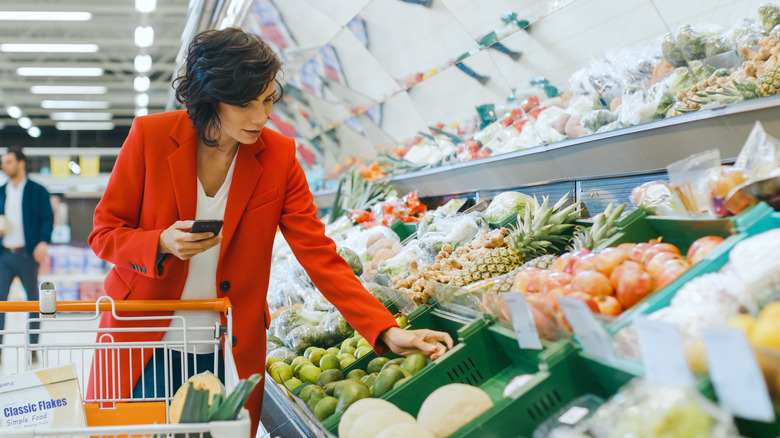Why Shoppers Are Willing To Pay Inflated Prices For Fresh Food
As inflation continues to affect the price of groceries, it can become a battle between paying more for the item you want or selecting an alternative that might not be as nutritious and fresh. After all, some days, it can be hard to justify buying the organic spring greens mix when the standard head of iceberg lettuce is significantly less expensive.
According to the 2022 Deloitte fresh food consumer survey, 53% of respondents said the rising price of food made them feel stressed about shopping. And it seems to be evident in their shopping preferences. The survey also found that 92% of respondents who recognized inflation said they were changing their shopping habits somehow — for example, buying private labels, shopping sales, or buying less food altogether.
Similarly, a Tasting Table survey found most people were willing to change how they shop to cope with the increased food prices. Of the 615 respondents, 40.65% said they were likely to switch to private label food brands to save money, while another 32.52% said they were very likely to make the switch. So, it seems that consumers are willing to make sacrifices when it comes to brand, but there is one place where they won't compromise.
Sticking with fresh food -- even if it costs more
Most consumers say they're not willing to compromise on their health — in fact, they'll spend extra. The 2022 Deloitte fresh food consumer survey found that 55% of shoppers will pay a higher price for food items if they believe it's the best option for their health and wellness. That's in contrast to the 18% of survey respondents who said they are buying frozen or shelf-stable food items versus the higher-priced fresh option. When it comes to buying food that is deemed healthier, consumers are doing it for many reasons, according to Deloitte, such as to feel good, improve energy, manage weight, prevent disease, remain healthy, and for mental and emotional health.
Unfortunately, it's not known when prices will decline as farmers continue to cope with drought and smaller harvests and supply constraints continue to have a negative effect on prices (via Forbes). Whether you choose to buy less food, lower-priced items, or pay extra for the nutritious food items you want, the experience of shopping at the grocery store is definitely not the same as it was just a few years ago.

